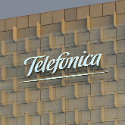Telefónica launched the service as a means of extending its GSM network, but customers use it for much more.

SAN FRANCISCO -- Oracle OpenWorld 2015 -- When Telefónica launched its Tu Go voice-over-WiFi service two years ago, the company viewed it as a means of extending coverage into areas where they had no signal. But customers had their own ideas.
Presenting at the Oracle Corp. (Nasdaq: ORCL) conference here Monday, David Artunedo, Telefónica Tu Go CTO, described how customers took off with Tu Go and made it their own.
Tu Go is a WiFi calling and messaging service that runs in an app on a smartphone, tablet or PC. Unlike OTT calling services such as WhatsApp, Skype or Viber, Tu Go lets customers use their own mobile phone number to make and receive calls and messages. "You're calling on your existing line," Artudeno said. "You can call any number in the world and anyone in the world can call you. You don't change your number or identity. You can get calls on your mobile on GSM, and also on other devices where you have the Tu Go app installed."
We wrote about the underlying technology used in Tu Go about a month ago, and described how it uses server virtualization from VMware Inc. (NYSE: VMW) and NFV technology from Oracle Corp. (Nasdaq: ORCL) to power the service. This week, Artunedo provided more detail on the business value Telefónica SA (NYSE: TEF) gets from Tu Go, its history and why users like it. (See Telefónica Takes NFV Tu Go.)
Telefónica launched Tu Go in the UK in 2013, and envisioned it as a supplemental offering to get service to places where phones get no bars -- remote geographical areas and indoors. But customers started using it to save on roaming costs when traveling.
"Tu Go is much more than a WiFi calling solution," Artunedo said.
One use customers found for Tu Go is convenience, to make calls from the tablet or desktop. "When you're watching TV or reading the news on your tablet, why do you need to get up and get your phone?" Artunedo said. "You can use your phone line directly with the device you have in your hand."
Flexibility is another advantage of Tu Go that customers found, unforeseen by Telefónica. Users can apply a second number to their phone, different from the one attached to their SIM, Artunedo said.
Users rewarded Telefónica with sign-ups -- 700,000 Tu Go users in the UK -- and with a four-star rating for the software in the iPhone App Store, along with positive buzz on social media.
Telefónica rolled out Tu Go in Argentina in 2014. The use there was different than in the UK. Users there applied Tu Go to save roaming costs, as Argentinians frequently travel to Brazil.
Find out more about WiFi on Light Reading's Carrier WiFi Channel.
In addition to sign-ups, Tu Go users reward Telefónica with lower churn. The users are higher value to Telefónica -- they use more service, and they're demanding. They require higher quality and are willing to pay for it. But they're also more likely to switch carriers if dissatisfied, Artunedo said.
Users spend more time on Tu Go calls than on conventional GSM -- a minute longer on the smartphone, and even longer on the laptop. "Why? Because at the end of the day it's more convenient," Artudeno said. He pantomimed holding a cellphone up to his ear to make the point that it's uncomfortable to hold a phone there for a long time. But users can comfortably spend hours talking on the laptop, and they don't have to worry about running out of battery and the signal is more stable.
Partnering with customers, as Telefónica is doing here, is a key tenet of New IP. Sometimes that means engineers and business leaders from an enterprise customer work together with a carrier's own engineers and business leaders to jointly develop a service. In other cases, as with Tu Go, comms providers roll out a service expecting one kind of use for it and customers develop another. It means comms sometimes have to scramble to keep up -- but it's what success looks like.
— Mitch Wagner, 


 , West Coast Bureau Chief, Light Reading. Got a tip about SDN or NFV? Send it to [email protected].
, West Coast Bureau Chief, Light Reading. Got a tip about SDN or NFV? Send it to [email protected].
About the Author(s)
You May Also Like










